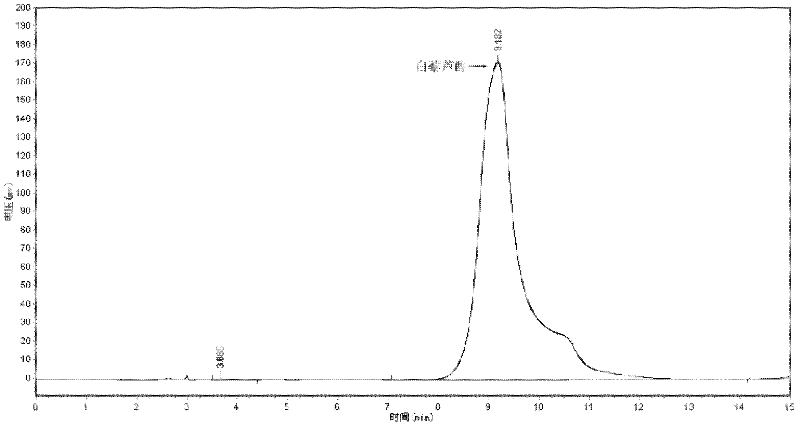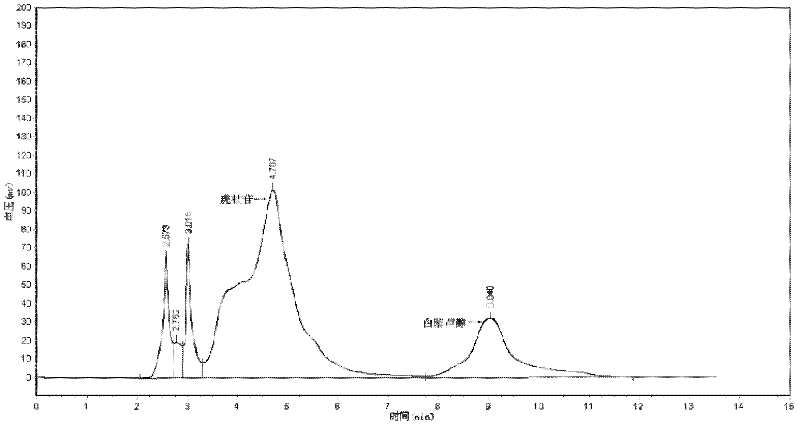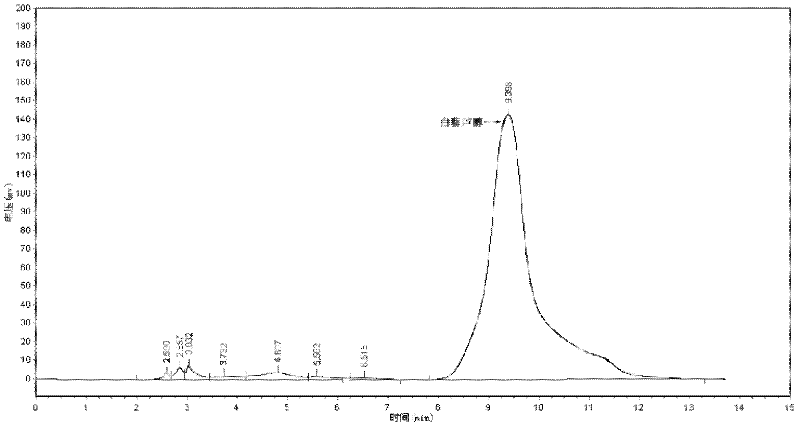Aspergillus niger capable of producing glycosidase and application thereof in improving resveratrol content in Japanese knotweed
A technology of Aspergillus niger and glycosidase, applied in the field of glycosidase-producing bacteria, can solve the problems of low conversion rate, complicated operation, easy pollution, etc., and achieve the effects of improved extraction yield, simple nutritional requirements and rapid growth
- Summary
- Abstract
- Description
- Claims
- Application Information
AI Technical Summary
Problems solved by technology
Method used
Image
Examples
Embodiment 1
[0028] Example 1: Enrichment, isolation and screening of glycosidase-producing microorganisms
[0029] Add about 50g of Polygonum cuspidatum dry powder (passed through an 80-mesh sieve after crushing) into a 250mL conical flask, add an appropriate amount of tap water and 5g of pastoral soil, stir evenly, and place it in a 30°C incubator for 7 days to enrich for glycosidase-producing microorganisms.
[0030] The above-mentioned enrichment overgrown with mold was diluted with sterile water and spread on a plate medium, and cultured in a biochemical incubator at 30° C. for 48 hours. The mold colonies with different shapes and colors were picked and inoculated on the slant medium, and the slant was placed at a constant temperature of 30°C for 48 hours to obtain spore-rich slant strains.
[0031] Pick the spores of the above strains with an inoculating loop, insert them into 50 mL of enzyme-producing medium (packed in a 250 mL triangular flask), and ferment them for 48 hours at 30°...
Embodiment 2
[0035] Example 2: Fermentation for Bioconversion of Polygonin to Resveratrol Glycosidase
[0036] Taking Aspergillus niger XW-2 as an enzyme-producing strain, after the optimization of the composition of the medium and the fermentation conditions, the activity of the glycosidase in the crude enzyme liquid is greatly improved compared with the activity of Example 1, and the preferred preparation method is as follows:
[0037] (1) Inoculate the Aspergillus niger XW-2 strain stored on the slant of the test tube into the slant medium, and culture the slant in a 30°C biochemical incubator for 48 hours. The slant culture medium is prepared according to the following composition and method: the potatoes are washed and peeled, cut into small pieces, 200 g are weighed, 1000 mL of tap water is added and boiled for 30 min, the potato pieces are filtered off with 4 layers of gauze, the filtrate is made up to 1000 mL, and then glucose is added. 20g, NaCl 5g, agar 20g, natural pH, heat unti...
Embodiment 3
[0042] Example 3: Biotransformation method improves resveratrol content in Polygonum cuspidatum
[0043] The rhizomes of the commercially available Chinese medicinal material Polygonum cuspidatum were dried in an oven at 85°C for 24 hours, pulverized with a pulverizer, and passed through an 80-mesh sieve. Put 50 mL of the crude glycosidase solution prepared in Example 2 in a 250 mL conical flask, add 5 g of Polygonum cuspidatum dry powder, seal the conical flask with plastic wrap, and then biotransform for 24 h in a water bath shaking box at 30°C and 300 r / min. The transformation product in the triangular flask was filtered with a Buchner funnel, and the Polygonum cuspidatum powder was dried in an oven at 85° C. to obtain the biotransformed Polygonum cuspidatum. The content of resveratrol in the biotransformed Polygonum cuspidatum was analyzed by high performance liquid chromatography, reaching 0.92% ( image 3 ), while the content of resveratrol in Polygonum cuspidatum witho...
PUM
 Login to View More
Login to View More Abstract
Description
Claims
Application Information
 Login to View More
Login to View More - R&D
- Intellectual Property
- Life Sciences
- Materials
- Tech Scout
- Unparalleled Data Quality
- Higher Quality Content
- 60% Fewer Hallucinations
Browse by: Latest US Patents, China's latest patents, Technical Efficacy Thesaurus, Application Domain, Technology Topic, Popular Technical Reports.
© 2025 PatSnap. All rights reserved.Legal|Privacy policy|Modern Slavery Act Transparency Statement|Sitemap|About US| Contact US: help@patsnap.com



